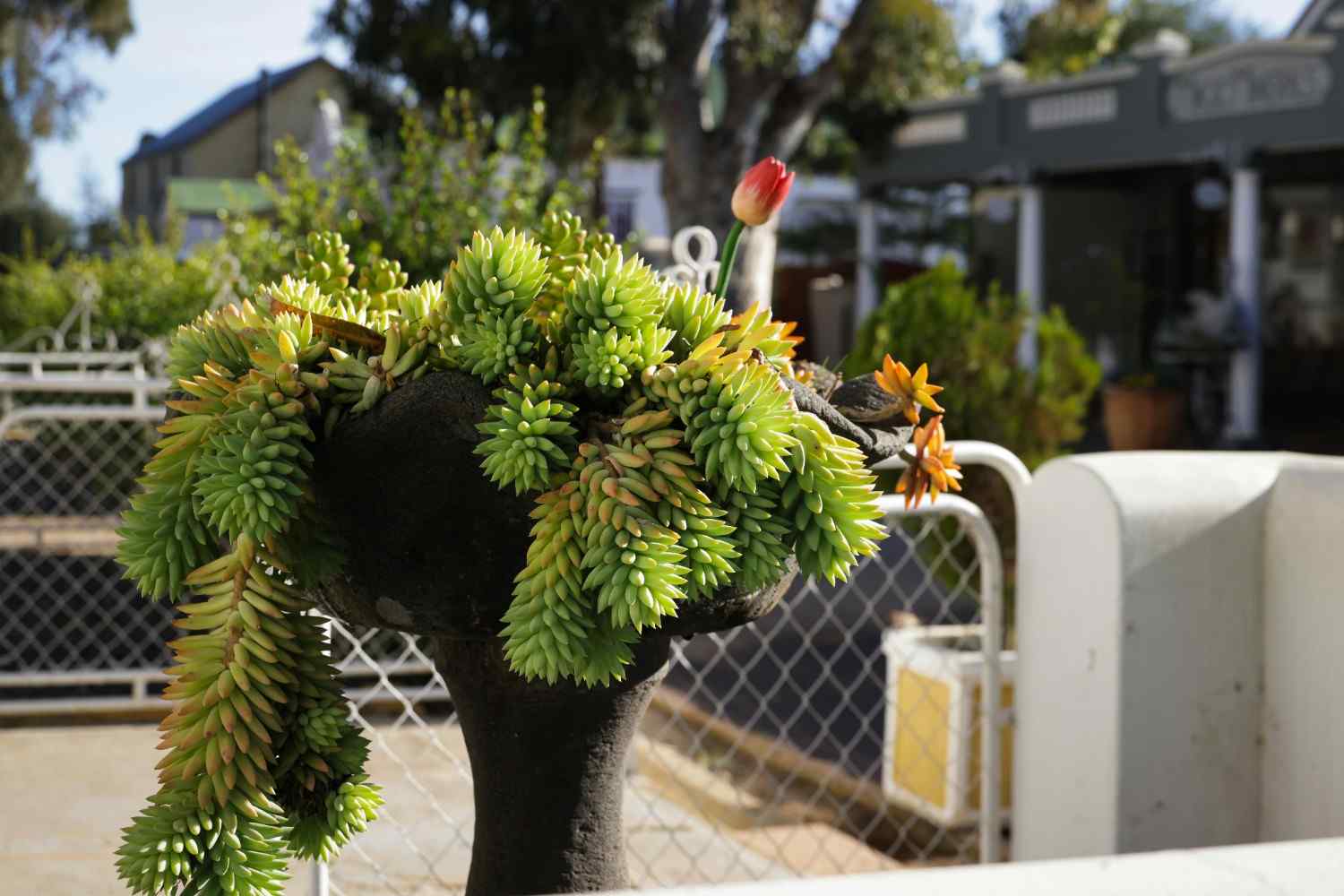Know Everything About Sedum
by Mark Hunt

A plant that has become a favourite among both gardeners and home designers is Sedum. Sedum, with its texture and colour, and plethora of options – ideal for easy-maintenance, low-maintenance gardens. This hardy?perennial is perfect for gardens, pots, or even green roofs. In addition to its distinctive, sculptural appearance, especially when planted, this plant is also a survivor, making it impressive in both indoor and outdoor settings.
What Is Sedum?
Sedum is a?genus in the Crassulaceae family that contains hundreds of species. Commonly known as stonecrop, it?is characterised by succulent foliage with thick leaves that store water. These fleshy leaves enable the plant to endure dry periods. There are low, creeping types of sedum suitable for ground covers, as well as tall, upright types. They bloom in clusters, attracting butterflies and bees.
Types of Sedum
- Sedum generally falls into?two categories: creeping and upright. Each of them has unique benefits and is used in?different ways for designing the garden.
- Creeping rows?of sedum are compact, low-prowling, forming dense floor coverings. Rapid spreading makes it ideal for topping bare soil, rock gardens, or slopes. In the warmer months, it produces small, star-shaped flowers that burst forth as colourful foliage.
- Upright varieties add height and structure, as they are taller than their cousins. They are visual stunners due to their thick stems and tightly packed flowers. They suit mixed?beds or stand-alone arrangements.
Why Gardeners Prefer Sedum
There are many reasons why sedum is perfect for both new and experienced gardeners alike.
- Easy Care: Sedum is a?very low-maintenance plant. Established plants are very low-maintenance and require little watering due to the moisture-retaining properties of their leaves.
- Drought Resistance: It has low moisture, making it ideal for drier climates.
- Gorgeous Flowers:?Sedum flowers are pink, yellow, red, and white. They add aesthetic value to gardens with their long-lasting blooms.
- Great for pollinators: Pollinators, such as bees and butterflies, are drawn to the flowers.
- Durability: It is a versatile material that can withstand various soil types and climates, maintaining its form and aesthetic appeal throughout every season.
Ideal Growing Conditions
Under optimal circumstances, where it can thrive in its full glory, sedum is truly spectacular.
- Sunlight:?This plant loves full sun, which causes vivid foliage and vigorous growth. Partial shade will also be fine, but too little light can lead to spaghetti-like stems.
- Soil Type: Soil that drains well to prevent root rot. Sedum performs better in sandy or gravelly soils than in heavy clay.
- Watering: Overwatering should be avoided. Let the?soil dry out between waterings. Roots can be injured by excess?moisture.
- Temperature: Sedum thrives in both hot and cold temperatures. Mulching just before a severe winter enables protecting?roots from frost.
Ways to Use Sedum in Design
The versatility of Sedum provides an opportunity to get creative, regardless of the garden’s style.
- Ground Cover: These are low-growing species that fill in gaps between stones and?fill bare patches admirably.
- Container Gardens: Put on a show! Plant sedum in your pots and?in decorative planters. It can be paired with other succulents.
- Rock Gardens: It pairs well with rocks and pebbles, offering an organic feel.
- Green Roofs: Due to their lightweight nature and drought resistance, sedum selections are often used for?green roofs.
- Borders & Edges: Include some vertically growing species that provide structure and contrast to the path or flower bed.
Propagation and Care Tips
- Sedum is a group of exceedingly easy-to-care-for and propagate plants, and it is a cinch to create more for your garden.
- Cuttings: Take stem or leaf cuttings, leave them out for a day to lose some water, and then plant them in the ground.
- Division: Established plants may be divided in the spring or fall to form new clumps.
- This helps you keep your plant tidy by pinching off the spent blooms and preventing the plant from becoming leggy.
- Sedum doesn’t require much in the way of feeding. You only need a light compost mix during?the growth stages.
Common Issues and Solutions
Sedum is quite hardy under normal circumstances, but it can occasionally experience a few problems if not cared for properly.
- Overwatering: Leads to root decay. Ensure proper drainage.
- Pests: You may encounter some aphids or mealybugs, but simply wash with mild soap and water.
- Low light: Leads to weak, lanky?growth. If needed, move to a place with more light.
Conclusion
One of the best plants to grow, especially in an outdoor space or somewhere that receives low to bright indirect sunlight, is Sedum. Valued for its beauty and?strength, as well as its simplicity, it’s a wonderful addition to any garden. Sedum?has endless potential in design, and everything from small ground covers to large, upright varieties can take centre stage. This wonderful plant can add colour and life to every corner of your abode with little to no fuss when treated right.
A plant that has become a favourite among both gardeners and home designers is Sedum. Sedum, with its texture and colour, and plethora of options – ideal for easy-maintenance, low-maintenance gardens. This hardy?perennial is perfect for gardens, pots, or even green roofs. In addition to its distinctive, sculptural appearance, especially when planted, this plant is…